Fix and Patch - more on maw seed ballasting
Mixing and pasting track ballast currently looms large and I am attaching details of the procedure that works for me. I prefer the small poppy seeds to gritty mineral sands. I use wallpaper paste as the adhesive. It should offer less resistance than PVA should there be a change of plan or track repairs needed.
I use simple tools, a small plastic bowl (ex Christma Pudding basin), stainless steel spatula and a small screw driver:
I use a heavy duty wallpaper paste which has been chopped finer using the Kenwood liquidiser in the kitchen. Hopefully the finer powder mixes more quickly and easily. To make sure that the mix can be used well before it starts setting I only make a small batch at a time. I use around 8ml of water (1/2 a tablespoon):
I add sufficient dry paste powder to make a stiff mix (around half a teaspoon full):
I then stir in sufficient dry seeds to make a stiff porridge. In this example, just over 1/4 ounce or just under 10 gm:
The porridge is then spread between or along the tracks using the spatula:
For smaller places I use the screw driver:
For the sides of the track I make a wedge or fillet which extends about 1cm from the edge of the rail:
This is then flattend between the sleepers and smoothed into place:
Then depending on my patience I can use the small screw driver to clean out between individual sleepers:
Spare or left over material can then be placed between the rails using the small screw driver:
Experience suggests that it can be three or four days before the mix completely dries.
Prior to running trains the track is brushed gently with an old tooth brush and the surplus seed carefully removed with a vacuum cleaner. The tops of the rails are then cleaned with a damp cloth. Too little paste or applying the porridge too long after mixing may result in a very fragile ballast which can disappear up the vacuum cleaner!
-
 1
1


.thumb.jpg.60c53fcbcaa34017b05b8919d1a9e6d2.jpg)
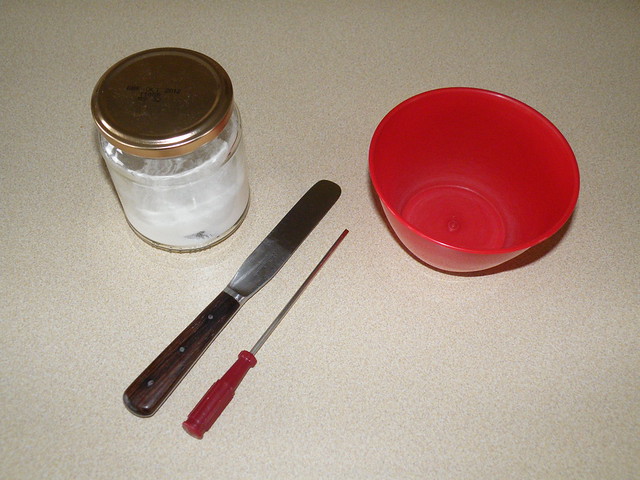
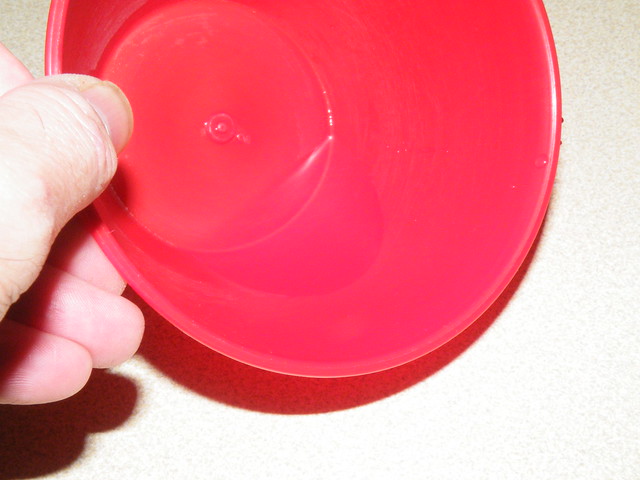

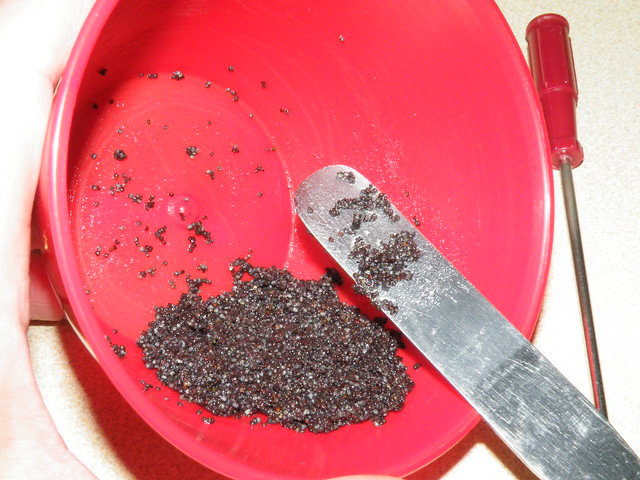
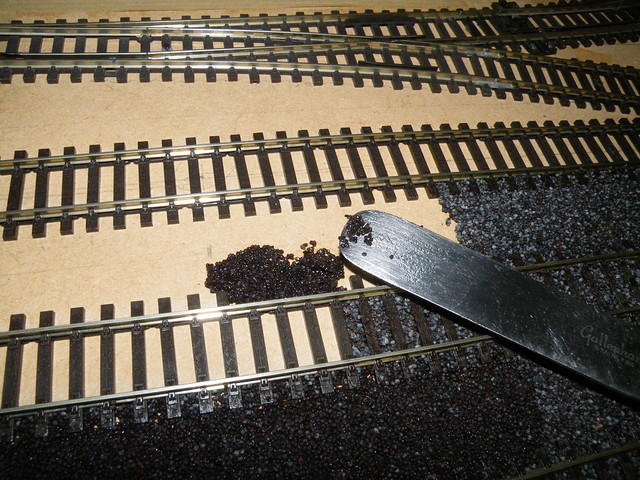
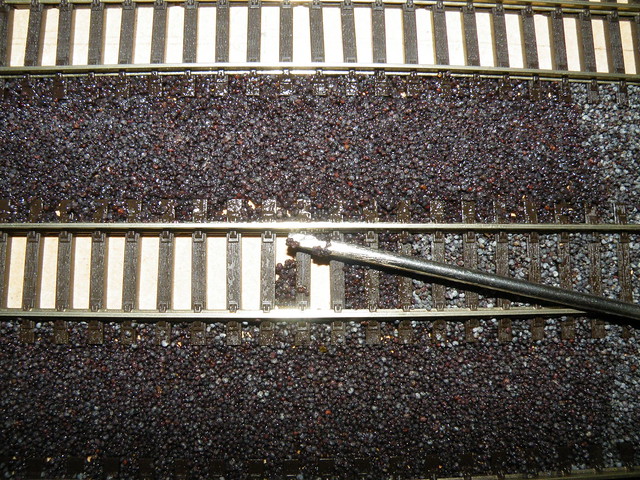
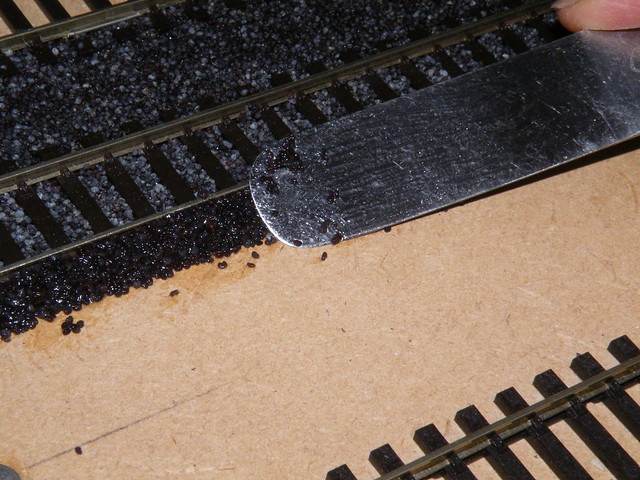
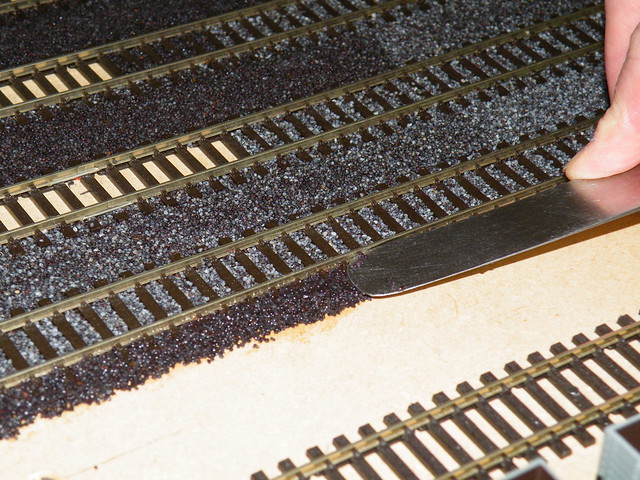
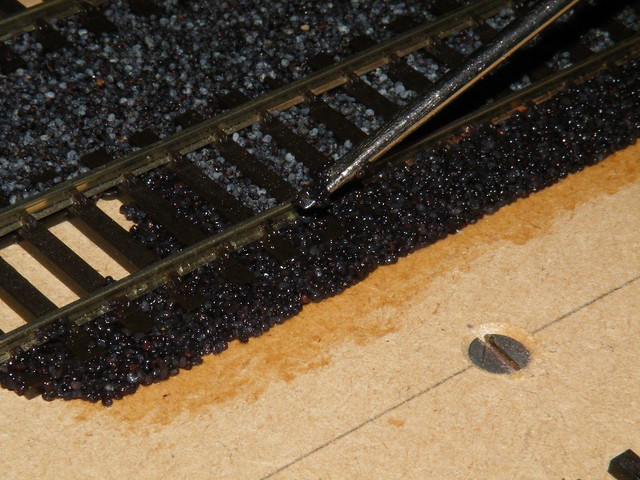


9 Comments
Recommended Comments
Create an account or sign in to comment
You need to be a member in order to leave a comment
Create an account
Sign up for a new account in our community. It's easy!
Register a new accountSign in
Already have an account? Sign in here.
Sign In Now